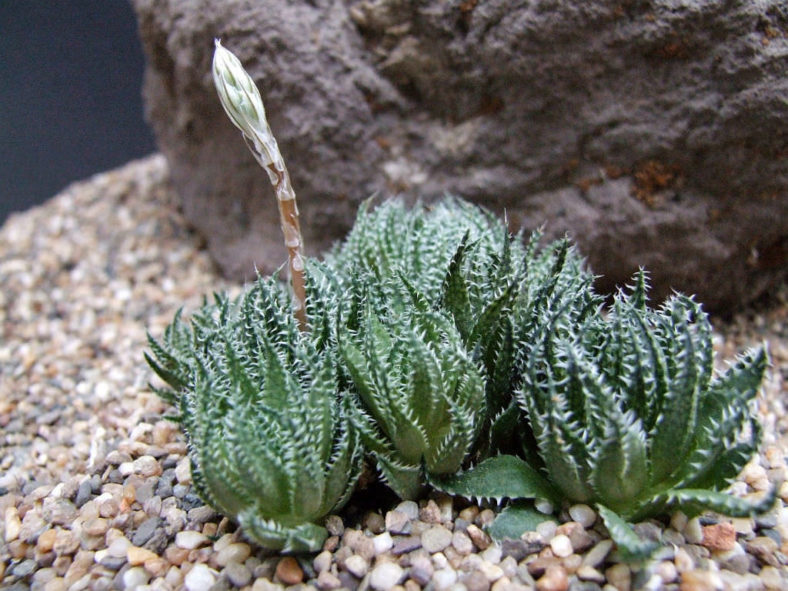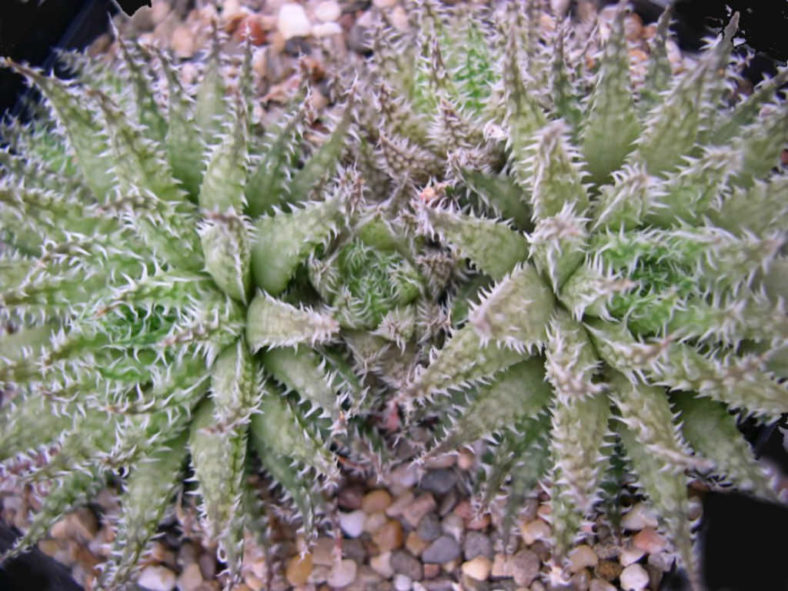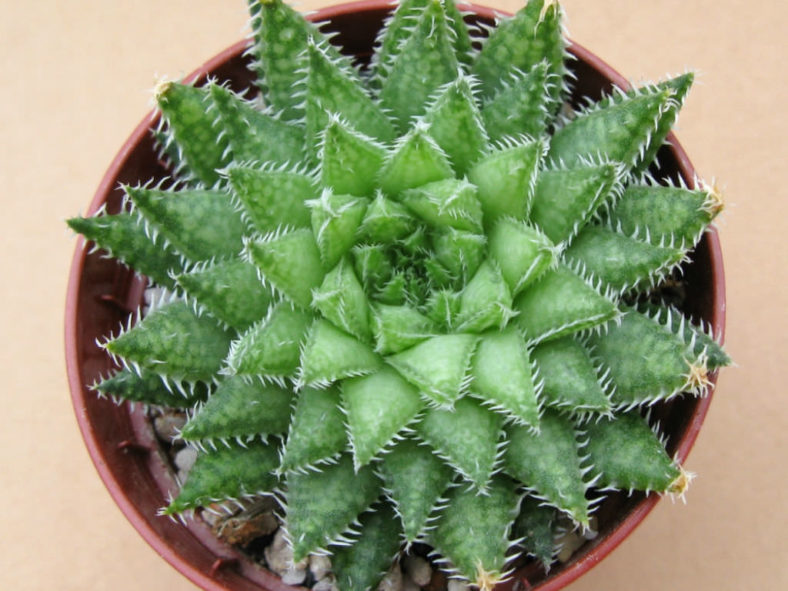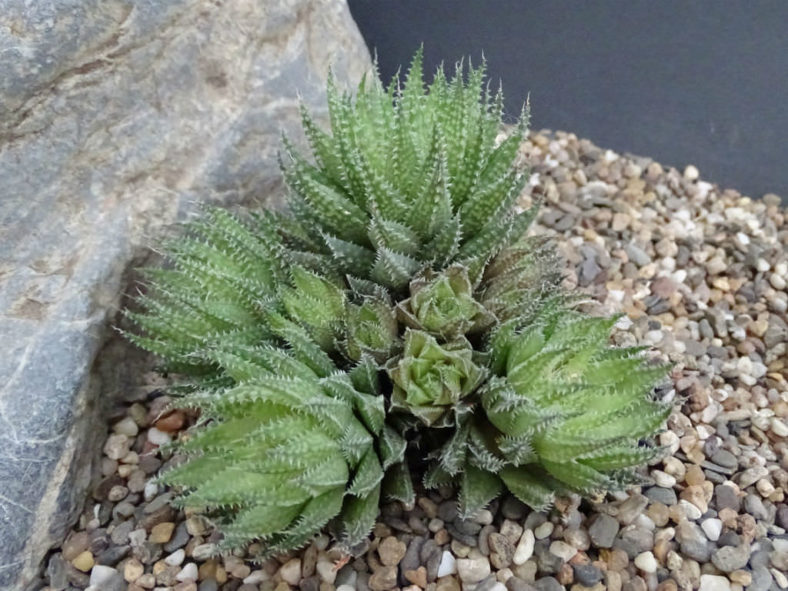Scientific Name
Haworthia herbacea (Mill.) Stearn
Synonym(s)
Aloe herbacea, Haworthia herbacea var. herbacea
Scientific Classification
Family: Asphodelaceae
Subfamily: Asphodeloideae
Tribe: Aloeae
Genus: Haworthia
Origin
Haworthia herbacea is native to South Africa. It grows under shrubs in the Western Cape province.
Description
Haworthia herbacea is a small succulent that forms rosettes of greenish-yellow leaves with a reticulate pattern, with translucent areas between the veins. The rosettes can grow up to 2 inches (5 cm) in diameter and produce offsets from the base, forming a dense cluster with age. The leaves are erect, incurved, measuring up to 0.8 inches (2 cm) long and about 0.3 inches (0.8 cm) wide. Margins and keel are fringed with firm, glassy white spines. As the rosette matures, the leaves become dark waxy green, and the spots are more raised, pure white, and randomly speckled on both surfaces.
The flowers are large, creamy-white or beige with pinkish tips and appear on slender stalks, usually in late winter and spring.
Haworthia herbacea is very similar to Haworthia reticulata, and it isn't easy to distinguish between them.

Hardiness
USDA hardiness zone 10a to 11b: from 30°F (-1.1°C) to 50°F (10°C).
How to Grow and Care
These succulents are not considered difficult houseplants to grow. If you can keep a pot of Aloe alive on a windowsill, chances are you can do the same with a dish of Haworthia. As with all succulents, the most dangerous situation is too much water. They should never be allowed to sit in water under any circumstances. At the same time, these little decorative plants can be grown in interesting containers such as teacups and even miniature baby shoes. If you're given a Haworthia in such a container, ensure the container has adequate drainage.
Haworthias are small, usually between 3 and 5 inches (7.5 cm and 12.5 cm) in height, and relatively slow-growing. Therefore, they are often grown in small clusters in wide, shallow pots. Over time, clusters will naturally enlarge as the mother plant sends off small plantlets. When the cluster has outgrown its pot, repot into a new, wide, shallow pot with fresh potting soil in the spring or early summer. This is also the time to take offsets for propagation.
See more at How to Grow and Care for Haworthia.
Links
- Back to genus Haworthia
- Succupedia: Browse succulents by Scientific Name, Common Name, Genus, Family, USDA Hardiness Zone, Origin, or cacti by Genus
Photo Gallery
Click on a photo to see a larger version.


